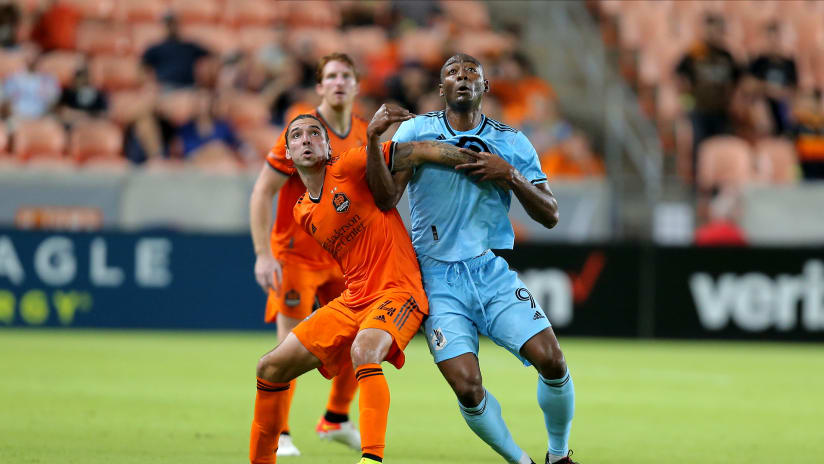So you don’t have an MLS contract, but you’re looking to sign with a team. You’re a free agent! Just show some sporting director that you’ve got what it takes to play at this level, and you’ll earn a contract offer in no time.
Easy, right? Well, maybe. How old are you? What kind of experience have you got? What’s your mother’s maiden name? It’s easy if you fit Major League Soccer’s description of a free agent; otherwise, it gets a little complicated. With free agency opening up on December 13, now is the perfect time to wrap your head around this semi-convoluted process.
Regular Old Free Agency
Sports fans across the globe are familiar with the concept of free agency. An athlete with sufficient experience plays to the end of their contract with an organization and opts not to resign with the same team. They take their talents to the market, hoping to find another team that will pay them for their services. They can go wherever they choose, with some stipulations depending on what sport they play and what league they play in. For Major League Soccer players, there are more than a few standards to consider.
Since the league first introduced free agency in 2015, the rules have changed quite a bit. Initially, the only players eligible for free agency were at least 28 years old with a minimum of eight years of MLS service under their belts. In a game that historically utilizes younger players, this early definition of free agency limited players and teams quite a bit, but it was better than nothing.
In 2020, a significant update to the rules gave more players the freedom to decide where they wanted to play when they ran out of contract. Now, any player over 24 who has played in MLS for at least five seasons can be considered a free agent when their contract is up. There’s no cap on the number of free agents any one team can sign, nor is there an exclusion based on player salary. Slowly but surely, the “free” in free agency is starting to become a reality.
Below are just a few of the biggest names in MLS that are set to be available as free agents this offseason:
- Diego Rubio
- Miles Robinson
- Nicolás Lodeiro
- Julian Gressel
- Kellyn Acosta
- Carlos Vela
What Does Everyone Else Do?
Unfortunately for many players, not everyone is over the age of 24 with five years in MLS. Zarek Valentin and Clint Irwin both came to the Loons via free agency, but youngsters like Devin Padelford and Sang Bin Jeong would have to wait at least a few years before they could make use of the process. We don’t want them leaving anytime soon, but hypothetically speaking, there are several ways that players ineligible for free agency could change teams.
Trades
Because MLS is technically a single entity, player trades are extremely easy for clubs to conduct. Individual franchises only ever own the rights to a player's services, while the league itself maintains the actual contract. As long as a team has the rights to a player’s contract, they are able to trade that player if they can find the right deal.
For example, MNUFC traded $75,000 worth of General Allocation Money and a second-round SuperDraft pick to Nashville in exchange for Jan Gregus’ player rights. There was no need to negotiate a new contract upon his arrival, as the contract he signed with Nashville was still valid. The trade window opened at 9:00 a.m. ET on December 11 and won’t close until after the 2024 season has started.
Re-entry
The Re-entry Process has fewer barriers to entry, but it’s not for everybody. Eligible players are at least 22 years old, with one year of MLS experience on their résumé. Through two stages of drafting, players that haven’t received a contract offer or had their options declined have the chance to be selected by any team in the league. This year’s list of eligible players will be released on December 13, with the first and second rounds scheduled for December 14 and 21 respectively.
The selection process for the Re-entry Draft is determined by the reverse order of how the league finished in the previous season, operating very similarly to a traditional draft. Clubs must either exercise the option or offer a contract to any players they select in either stage of this draft. Should selected players reject the offer, the club will still hold the players’ MLS rights.
Waivers
For players that aren’t eligible for either free agency or the re-entry process, the End-of-Year Waivers process offers an alternative. After every team in the league has dealt with their player options, a list of all eligible players who didn’t have their options exercised will be released. This year’s list of eligible players will be released on Tuesday, December 12.
The order for waiver selection is exactly the same as the Re-entry Draft. After the process is complete, all remaining players that haven’t been selected may be signed by any MLS team on a first-come, first-served basis.
Each of these mechanisms are designed to be used by every MLS team, giving sporting departments across the league access to the largest possible talent pool. If a team selects a player from waivers, there is no impact on their participation in the Re-entry Draft; both systems are meant to be taken advantage of in a league with such unique roster parameters.
There’s plenty more that goes into player movement, from Right of First Refusal to Bona Fide Offers, but for all intents and purposes, this is a good introduction to MLS free agency. Visit this article for a timeline of these processes, and stay tuned for an offseason filled with roster movement across the league.




